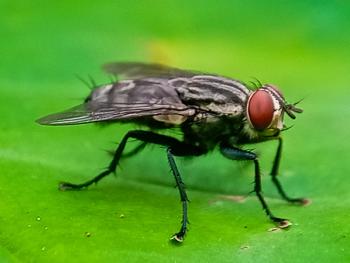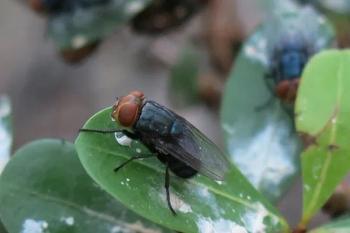
- dvm360 July 2022
- Volume 53
- Issue 7
- Pages: 40
Protecting adopted pets from heartworm disease
Owners, rescue staff, and veterinarians must make special considerations during transport and adoption of dogs infected with heartworms
Heartworm disease has been diagnosed worldwide, including in all 48 contiguous states in the United States. Stray dogs transported long distances by rescue organizations may be at higher risk of heartworm disease, especially those originating from highly endemic areas. Because of the long prepatent period, it is easy to unknowingly transport infected dogs and create new reservoirs of infection.
Responsible testing, treatment, and prevention of heartworm disease in rescue populations of dogs are essential for the health of both the individual dog and the overall population. After adopting a new dog, owners should educate themselves to prevent any lapses in prevention or treatment for heartworm disease.
Heartworm disease review
Transmission of the causative nematode, Dirofilaria immitis, occurs when a mosquito takes a blood meal from a dog with circulating microfilariae. These microfilariae develop to third-stage larvae (L3) in the mosquito and are then passed on to another dog during a subsequent blood meal. After 2 additional molts, D immitis reaches the adult stage and begins to produce microfilariae 6 to 9 months after infection.
Available point-of-care tests for heartworm rely on detection of an antigen produced by adult worms, particularly females. In addition, the American Heartworm Society (AHS) recommends all patients be screened for microfilariae, as microfilariae have been detected in the absence of an antigen in some cases.1
The severity of symptoms in infected patients depends on worm burden relative to patient size and activity level.1 Clinical signs can range from mild cough and exercise intolerance to pulmonary hypertension and right-sided heart failure, and severe infection may result in death. Because of this, clinicians recommend year-round prevention. Heartworm-preventive drugs are widely available, safe, and effective; all FDA-approved products rely on macrocyclic lactone (ML) drugs.
The impact of pet transport on heartworm prevalence
Between 2013 and 2016, positive heartworm antigen tests increased by 15.3% nationwide, representing a significant increase from previous years.2 Regional differences in prevalence remained, with the south-eastern United States seeing an increase of 17.9% in prevalence and the rest of the country seeing an increase of 11.4%.2
Over the similar period of 2013-2017, heartworm incidence in Colorado increased by 67.5%.3 During this study period, more than 114,000 dogs were imported to the state, with the majority coming from states with higher heartworm prevalence.3
Despite recommendations for testing prior to transport, only 35% of the rescue organizations receiving dogs required heartworm testing, treatment, or prevention prior to transport, as shown in a 2016 survey.4 This resulted in many dogs being transported with unknown heartworm disease status and risk of infection.
Considerations for the transport of infected and at-risk dogs
There are 2 major considerations when transporting dogs with known heartworm infection or dogs from an area with a high prevalence of disease. First, the safety of the dogs, especially if they are infected, must be a priority. Secondly, the risk of spreading heartworm disease must be considered and minimized. The AHS and the Association of Shelter Veterinarians (ASV) have developed guidelines for transporting dogs with the goal of minimizing heartworm transmission.5
Before transport, all dogs should take both a heartworm antigen and a microfilaria test. If both are negative, the pet should start prevention treatment and retest in 6 to 7 months because of the long prepatent period of the disease.1,5 If either test is positive, transport should be postponed. Additionally, symptomatic dogs should not be transported because exercise, overheating, and excitement place dogs at higher risk of progressive disease.1,5
Although it would be ideal to treat all dogs with a positive result prior to transport, in many cases, rapid transport saves lives. Minimizing stress and excitement will protect the health of the dog during transport.
For pets with a positive result that must be transported prior to treatment, every effort should be made to prevent the dog from becoming a reservoir of infection. All dogs with a positive result for either the antigen or microfilariae should receive a 30-day course of doxycycline to reduce the development of further microfilaremia and prevent microfilariae from developing into infective larvae in the intermediate host. Dogs that test positive for the antigen but negative for microfilariae should also receive an ML preventive prior to transport. Dogs that test positive for microfilariae, regardless of antigen status, should receive 1 of the following treatments5:
- Topical preventive product containing moxidectin, which can eliminate most circulating microfilariae
- ML preventive and topical insect repellent, which will prevent mosquito bites and transmission of heartworm larvae for 30 days
- ML preventive and isoxazoline product 24 hours prior to transport, which will kill mosquitos shortly after feeding and prevent development and transmission of heartworm larvae
Heartworm treatment protocols
The AHS has a detailed treatment regimen for dogs infected with D immitis.1 Treatment begins with the administration of a heartworm preventive and a 30-day course of doxycycline at 10 mg/ kg by mouth twice a day. Doxycycline kills the heartworm symbiote Wolbachia, reducing the pathology associated with adult heartworm death during treatment and decreasing transmission by inhibiting microfilaria development.1 An approved ML product should be administered monthly throughout treatment. Adulticidal treatment with melarsomine should be administered by deep intramuscular injection on treatment days 60, 90, and 91. Additionally, exercise restriction is essential from the time of diagnosis until 6 to 8 weeks following the final melarsomine injection.
Slow-kill methods, which involve the continuous dose of ML preventives alone, are not recom- mended because of the time required to kill the worms. During this time, the disease pathology continues, as does the potential for selection of ML-resistant worms.1
Care of newly adopted dogs
The owner of the adopted pet should receive all records, including test results and date of the most recent ML preventive dose or stage of infection. At the time of adoption, new owners should receive information about retesting following transport, routine testing, and the importance of year-round prevention. Shelter and rescue staff are in the best position to provide this education, as dogs that are up-to-date on vaccinations may not see a veterinarian for months following adoption. Because ML preventives are most effective against L3 and young L4 larval stages, a single missed dose can result in the development of infection.1
Treatment of dogs with heartworm disease may not be possible in a shelter or rescue setting, but if a period of less than 12 months has passed since the completion of the doxycycline treatment regimen and monthly preventives have been administered, adulticidal treatment may be instituted following adoption.6 These dogs should remain exercise restricted until 6 to 8 months past the final injection.
If a dog begins heartworm treatment but faces interruption, the stage of treatment and length of interruption should be considered. If a dog received the first of the 3 melarsomine injections, the second and third injections may be administered if the treatment lapse was less than 6 months.6 If treatment lapses were longer than these specified periods, the dog should restart treatment.
Take-home points
Heartworm disease poses a risk to dogs throughout the United States. Although transporting rescue dogs throughout the country can increase adoption rates and save lives, the risk of disease transmission must be considered. Instituting routine heartworm antigen and microfilaria testing prior to transport and following the AHS/ASV guidelines will both protect infected dogs from worsening disease and prevent spread of the disease. Once dogs are adopted, new owners must be advised of the current heartworm disease status and informed of when the next preventive or treatment should be administered.
Kate Boatright, VMD, is a 2013 graduate of the University of Pennsylvania
in Philadelphia and a practicing veterinarian, freelance speaker, and author
in western Pennsylvania. She is passionate about mentorship, education,
and addressing common sources of stress for veterinary teams and recent graduates. Outside clinical practice, Boatright actively participates in organized veterinary medicine at the local, state, and national levels.
References
- Current canine guidelines for prevention, diagnosis, and management of heartworm (Dirofilaria immitis) infection in dogs. American Heartworm Society. Updated2018. Accessed June 10, 2022. https://d3ft8sckhnqim2.cloudfront.net/images/pdf/AHS_Canine_Guidelines_11_13_20.pdf?1605556516
- Drake J, Wiseman S. Increasing incidence ofDirofilaria immitisin dogs in USA with focus on the southeast region 2013-2016.Parasit Vectors.2018;11(1):39. doi:10.1186/s13071-018-2631-0
- Drake J, Parrish RS. Dog importation and changes in heartworm prevalence in Colorado 2013-2017. Parasit Vectors.2019;12(1):207. doi:10.1186/s13071-019-3473-0
- Simmons KE, Hoffman CL. Dogs on the move: factors impacting animal shelter and rescue organizations’decisions to accept dogs from distant locations. Animals (Basel). 2016;6(2):11. doi:10.3390/ani6020011
- Minimizing heartworm transmission in relocated dogs. American Heartworm SocietyandAssociation of Shelter Veterinarians.Accessed June 9, 2022. https://d3ft8sckhnqim2.cloudfront.net/images/Relocating-HW-Dogs.pdf?1610058246
- Duke C. AHS board speaks out: when heartworm treatment is interrupted. Accessed June 13, 2022. https://www.heartwormsociety.org/veterinary-resources/veterinary-education/ahs-board-speaks-out/597-when-heartworm-treatment-is-interrupted
Articles in this issue
over 3 years ago
Z is for zebras and other dental surprisesover 3 years ago
Practice ownership perksover 3 years ago
3 steps to protect your practice from ransomwareover 3 years ago
Colic surgery delivers a painful reminderover 3 years ago
Hiring isn't all about moneyover 3 years ago
Dermatology image quizover 3 years ago
The A — Z on ADA complianceover 3 years ago
Managing feline behavior with modificationsNewsletter
From exam room tips to practice management insights, get trusted veterinary news delivered straight to your inbox—subscribe to dvm360.





